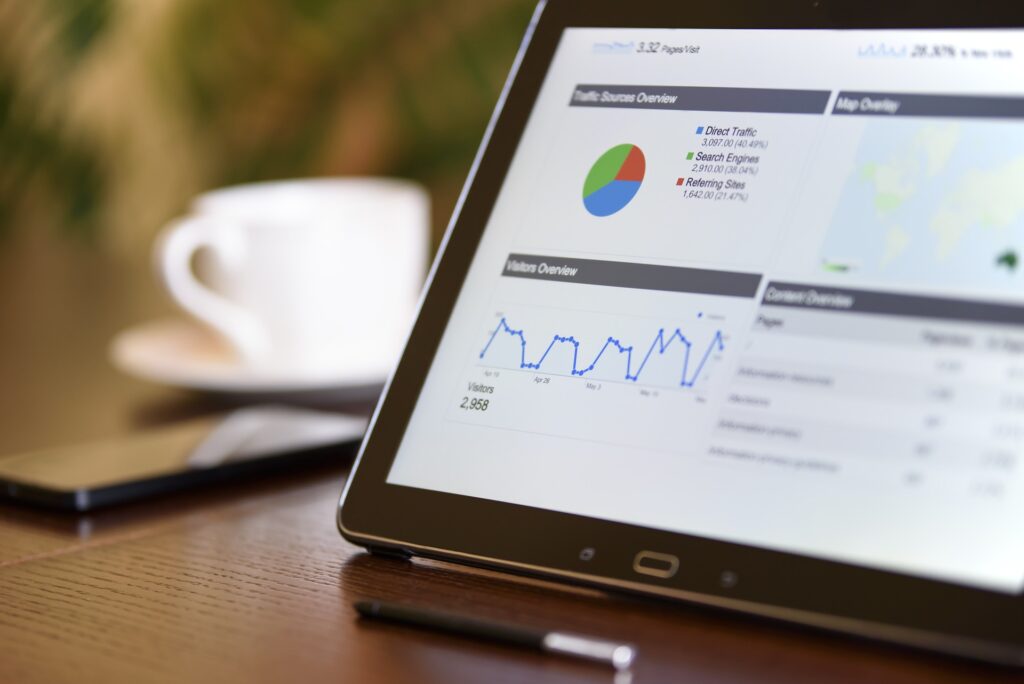You must be wondering what data Analytics is or heard some group of people saying always use data analytics on your business or you want to implement it on your business don’t worry we’re here for you.
Data analytics has the power to transform businesses for good, as shown by companies like Netflix, which uses data to recommend shows tailored to each viewer. This level of personalization, driven by data, is key to staying competitive in today’s market.
In this article, we’ll explore what data analytics is, the processes involved, different types of analytics, and the essential skills needed to thrive in this field. We’ll also discuss the benefits and challenges of data analytics. But first you need to know the meaning of data Analytics so let’s explore.
What is Data Analytics?
Data analytics is the process of turning raw data into actionable insights that drive decision-making. At its core, it involves a systematic approach that includes data collection, cleaning, transformation, and modeling. By using various tools and technologies, such as Python, SQL, and Excel, businesses can analyze data to identify patterns, trends, and correlations that might otherwise go unnoticed.
In today’s fast-paced business environment, data analytics is essential for growth. It enables companies to make informed decisions, optimize their operations, and improve customer experiences. Whether it’s predicting market trends or identifying inefficiencies, data analytics serves as a powerful tool that helps businesses stay ahead of the competition.
By leveraging data analytics, companies not only enhance their decision-making processes but also gain a competitive edge, making it an important component of modern business strategy that helps in almost every part of business.
Why Is Data Analytics Important?
Data analytics is the backbone of every business strategy, much like how tires are essential to a vehicle’s movement and stability. Just as tires enable a car to move smoothly and maintain balance on the road, data analytics empowers businesses to navigate their respective markets with agility and precision. Without data analytics, a business struggles to move forward efficiently. Data analytics offers crucial insights that allow businesses to make smarter, evidence-based decisions, ensuring they remain competitive and responsive to changing conditions. These insights help companies identify trends, understand customer behavior, and predict future outcomes, much like how tires provide the necessary traction to keep a vehicle on course. Are you ready to be among the top? Congratulations, you’re almost there. Let’s take a look at the type of data analytics.
Types of Data Analytics
Imagine you’re a data analyst at a retail company, and your goal is to boost sales. Throughout your day, you rely on different types of data analytics to achieve this goal. Let’s walk through how each type plays a role in your work.
Descriptive Data Analytics
Your day begins with reviewing last quarter’s sales data. Descriptive analytics helps you summarize and understand what happened in the past. By analyzing this data, you can identify trends, such as which products sold the most and during what periods. For example, you might discover that a specific product line performs exceptionally well during the holiday season. This insight helps you understand past performance, allowing you to replicate successes and avoid past mistakes.
Diagnostic Data Analytics
After identifying trends with descriptive analytics, you notice a drop in sales for one product category. Now, you need to understand why this happened. Diagnostic analytics comes into play here, helping you dig deeper into the data. You examine customer feedback, competitor actions, and marketing efforts during that period. Through techniques like correlation analysis, you find that a competitor launched a similar product at a lower price. This analysis pinpoints the cause of the sales decline, enabling your team to take corrective action.
Predictive Data Analytics
With a clearer understanding of past performance and the reasons behind it, your next task is to forecast future trends. Predictive analytics uses statistical models and machine learning algorithms to predict what’s likely to happen next. For instance, by analyzing past sales data and current market trends, you might forecast a surge in demand for a particular product line in the next quarter. This foresight allows your company to adjust inventory levels, ensuring that you can meet customer demand without overstocking.
Prescriptive Data Analytics
Finally, after predicting future trends, you need to decide the best course of action. Prescriptive analytics takes it a step further by suggesting various options and their potential outcomes. For example, if predictive analytics forecasts increased demand, prescriptive analytics might recommend the best pricing strategy, optimal inventory levels, and the most effective marketing campaigns. This type of analysis helps you choose the best path forward, maximizing profits while minimizing risks.
Process of Data Analytics
Define the Objective
Start by clearly defining what you want to achieve with your analysis. This could be solving a specific problem, answering a question, or making a data-driven decision. A clear objective keeps the analysis focused and relevant.
Data Collection
Gather the relevant data needed for your analysis. This data can come from various sources such as databases, surveys, logs, or external data providers. The quality of the data you collect directly impacts the quality of your analysis.
Data Cleaning and Preparation
Clean and prepare the data for analysis by removing errors, filling in missing information, and standardizing formats. This step is crucial because poor-quality data can lead to inaccurate conclusions.
Data Exploration and Analysis
Analyze the data to uncover patterns, trends, and relationships. This is where you start to gain insights from the data, using techniques like data visualization and statistical analysis.
Modeling and Algorithm Application
Apply statistical models or algorithms to predict outcomes or classify data. This step transforms your raw data into actionable insights that can be used for decision-making.
Interpretation and Insights
Interpret the results from your analysis to draw meaningful conclusions. This step is about understanding what the data is telling you and how it relates to your original objective.
Communication of Results
Present your findings in a clear, concise, and actionable manner. This ensures that the insights are understood and can be used by stakeholders to make informed decisions.
Skills And Tool Required for Data Analytics
To succeed in the field of data analytics, a combination of technical skills and analytical thinking is essential. Here are the key skills should master:
Language (R, Python)Programming
- Python: Python is one of the most popular programming languages in data analytics due to its versatility and ease of use. It offers a wide range of libraries like Pandas for data manipulation, NumPy for numerical computations, and Matplotlib or Seaborn for data visualization.
- R: R is another powerful programming language specifically designed for statistical analysis and data visualization. It’s widely used for data mining, statistical modeling, and creating detailed visual reports.
Database Management (SQL)
- SQL (Structured Query Language): SQL is the backbone of database management and is essential for querying and managing large datasets. As a data analyst, you’ll frequently use SQL to extract, filter, and aggregate data from relational databases. Whether it’s joining multiple tables to gather comprehensive insights or writing complex queries to retrieve specific data points, SQL is a must-have skill for working with structured data.
Machine Learning, Probability, and Statistics
- Machine Learning: As businesses increasingly rely on predictive analytics, machine learning has become a critical skill for data analysts. Understanding machine learning algorithms, such as regression, classification, and clustering, allows you to build models that predict future trends and behaviors.
- Probability and Statistics: A strong foundation in probability and statistics is crucial for analyzing data, interpreting results, and making data-driven decisions. Concepts like hypothesis testing, statistical significance, and confidence intervals help you validate your findings and ensure they are reliable. This knowledge is also fundamental when working with machine learning models, as it enables you to understand and optimize their performance.
Data Visualization and Management Skills
- Data Visualization: this is also an important way of data analytics. It is just like you seeing how the wind blows and the direction it is coming from. Skills in data visualization allow you to present complex data in an easily digestible format. Tools like Tableau, Power BI, and Python’s Matplotlib or Seaborn are commonly used to create interactive dashboards, charts, and graphs that highlight key trends and patterns. Good visualization skills help in making data accessible to stakeholders, driving better decision-making.
- Data Management: Managing and organizing data efficiently is critical to the analytics process. This includes tasks such as data cleaning, data integration, and data storage. Strong data management skills ensure that the data you work with is accurate, consistent, and readily available for analysis. Familiarity with data management frameworks and practices is essential for maintaining data integrity and facilitating smooth analytical workflows.
Benefits of Data Analytics
2. Gaining a Competitive Advantage
In a world where everything moves quickly, staying ahead of the competition is essential. Data analytics provides organizations with the information they need to identify patterns, evaluate client behavior, and discover new possibilities. Imagine being able to forecast what your consumers want before they even realize it—this is the power of data. For example, a merchant may discover that customers are beginning to choose eco-friendly items. By identifying this trend early on using data, companies can change their inventory and marketing, leaving competitors scurrying to catch up.
2. Saving money.
Who doesn’t want to save money? Data analytics assists companies in doing this by finding areas where they are overspending and areas where they may save money. A manufacturing business, for example, may utilize data to improve its supply chain, minimizing extra inventory and delays. These modest modifications build up, resulting in significant savings.
3. Improving customer satisfaction
Customer satisfaction is the foundation of every organization, and data analytics can help maintain it that way. Businesses may provide customized experiences by learning what their consumers like and dislike. Consider how streaming providers propose shows based on your previous viewing history. That’s data analytics in action: making you feel seen and understood. When businesses utilize data to better satisfy their consumers’ requirements, they increase loyalty and keep them coming back.
Common Challenges in Data Analytics
While data analytics offers tremendous benefits, it also comes with challenges that businesses must navigate to fully leverage its potential.
1. Data Privacy Concerns
In today’s digital world, data privacy is critical. As businesses collect more personal and sensitive data, they face new challenges in maintaining privacy. Data processing is governed by strict standards such as GDPR and CCPA, and noncompliance can result in large costs and loss of confidence. Balancing data insights with privacy requires careful preparation and strong security.
2. Complexity of Data
The large amount and variety of data available now presents a challenge. Companies deal with both organized and unstructured data from many sources. Making this data actionable—integrating, cleansing, and processing it—is a major challenge. Big data and real-time analytics increase the complexity, demanding advanced management and analytical tools; otherwise, decision-making slows and bottlenecks develop.
3. Need for Skilled Professionals
Data analytics is a specialized field demanding a combination of technical and analytical skills. The shortage of skilled professionals capable of effectively utilizing data is growing. Companies struggle to find qualified data analysts, scientists, and engineers with expertise in programming, statistical analysis, and data visualization. This talent gap can impede a company’s ability to implement data-driven strategies and leverage the insights provided by data analytics.
By Implementing data analytics into your business strategy is not just optional but necessary. It plays a important role in enhancing decision-making capabilities and securing a competitive advantage. Understanding the various types of analytics, becoming proficient with the required tools, and navigating through common obstacles enables businesses to capitalize on data’s potential. This approach is crucial for driving growth and fostering innovation. Whether you are initiating your data journey or optimizing your current strategies, the time to fully embrace data analytics is now, as it is instrumental to the future success of your business.

